Adivasi Schooling: Kadar Students at Vazhachal
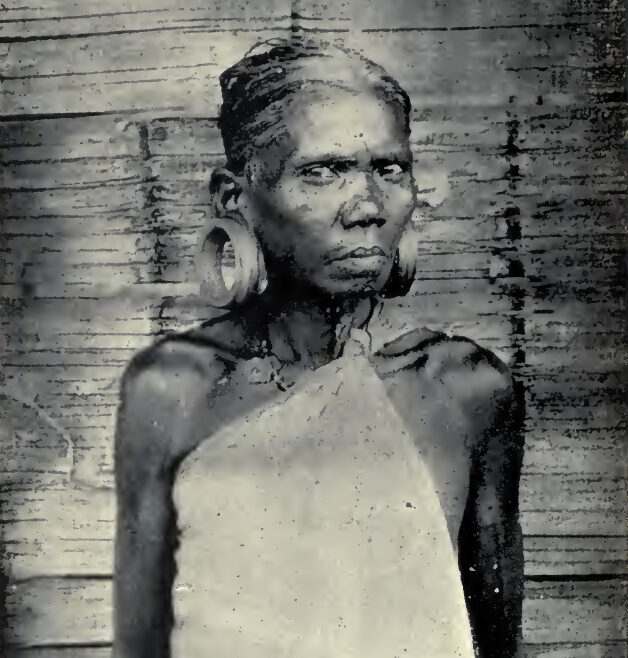
Who are the Kadars?
British Superintendant, Edgar Thurston mentions in his Castes and Tribes of Southern India (1909) that Kadars used to stay in the Annamalai Hills of the Western Ghats. They lived in settlements with neatly constructed bamboo huts, though they were mostly nomadic during the period. The community members collected forest produce and exchanged it for goods, while a few were working as forest guards at the time of Thurston’s visit to the community.
“It is said that our ancestors lived in a place called Karimala Gopuram (the highest peak in Thrissur and within Parambikulam). After a great flood, only a man and a woman remained. My grandfather used to say that our people believe that the entire Adivasi community was born of these two people.”
– Bibitha, recounting the Kadar origin myth, Vazhachal, 2023
Migration Stories
In Bibitha’s reckoning, there were two floods, the ancient one and a more recent one, though she did mention that her knowledge of their ancient history was tenuous.
“The group came from a place called Kuriyakutty near Parambikulam. There was a flood, and so, the families in the area relocated to various places to escape the flood. They did not stay permanently in an area, but moved around to a couple of other places and finally arrived in Vazhachal.”
– the oral history of Kadar migration as narrated by Bibitha, Vazhachal, 2023
Geetha Vazhachal, the current ooru moopan (community head), had spent a few years after school talking to Kadar elders in various oorus (the Kadar/Adivasi term for the village community) collecting information on their history and traditions. She said,
“It is believed that our people came over the jungles from near the Sindu River. They had finally settled at Parambikulam, the location selected by the British for the construction of a dam. When people were evicted for building the dam, they moved to several places. Only five families came to Vazhachal.”
– Geetha, Vazhachal, 2023
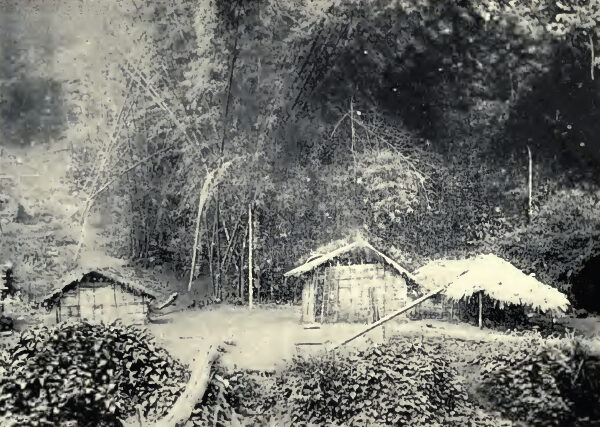
Kadars in the present-day
Three generations of Kadar have been living in the ooru, today a peri-urban location. Members of the community have married from the mainstream population and most families have access to modern gadgets like televisions. They also have access to the internet, though BSNL is the only service provider in Vazhachal.
“My grandfather was one of the first Kadars to get possession of land in the Vazhachal area. He was a forest watcher. Our ancestors came to the current location for tramway-related work. Although the tramway was not near Vazhachal, the road to the tramway began in nearby Chalakudy. They came, cleared the forest, and settled here.”
-Bibitha, Vazhachal, 2023
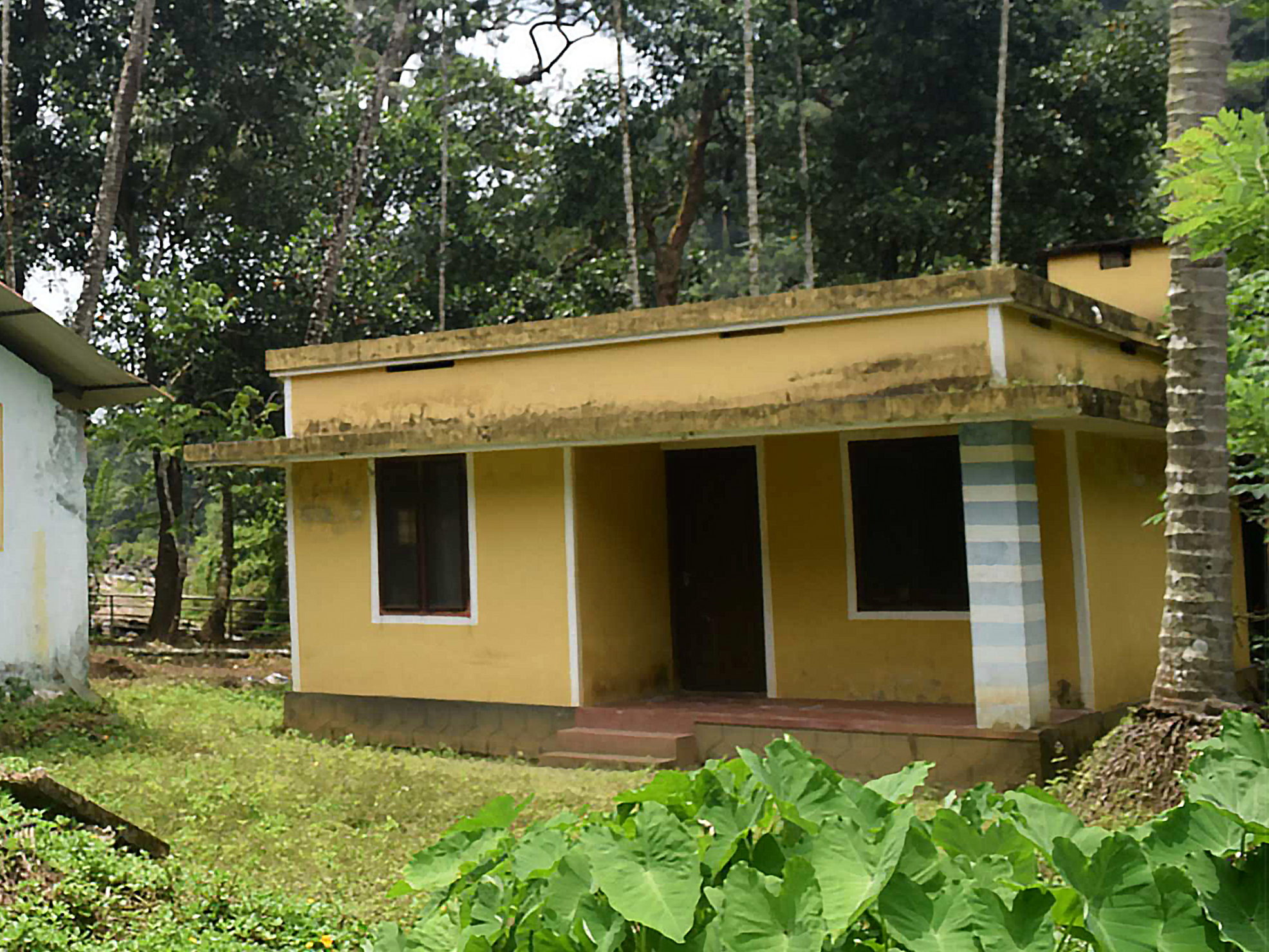
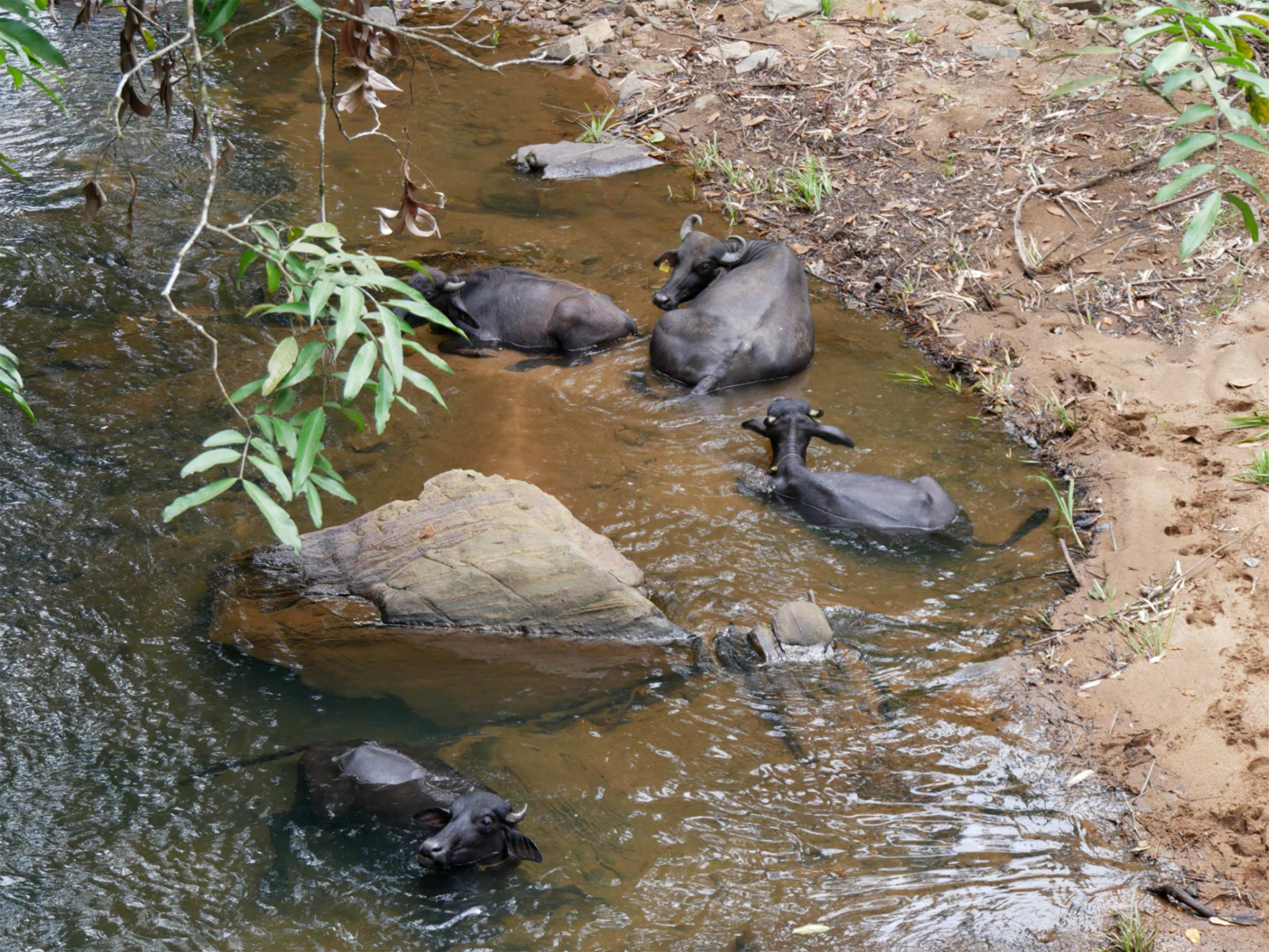
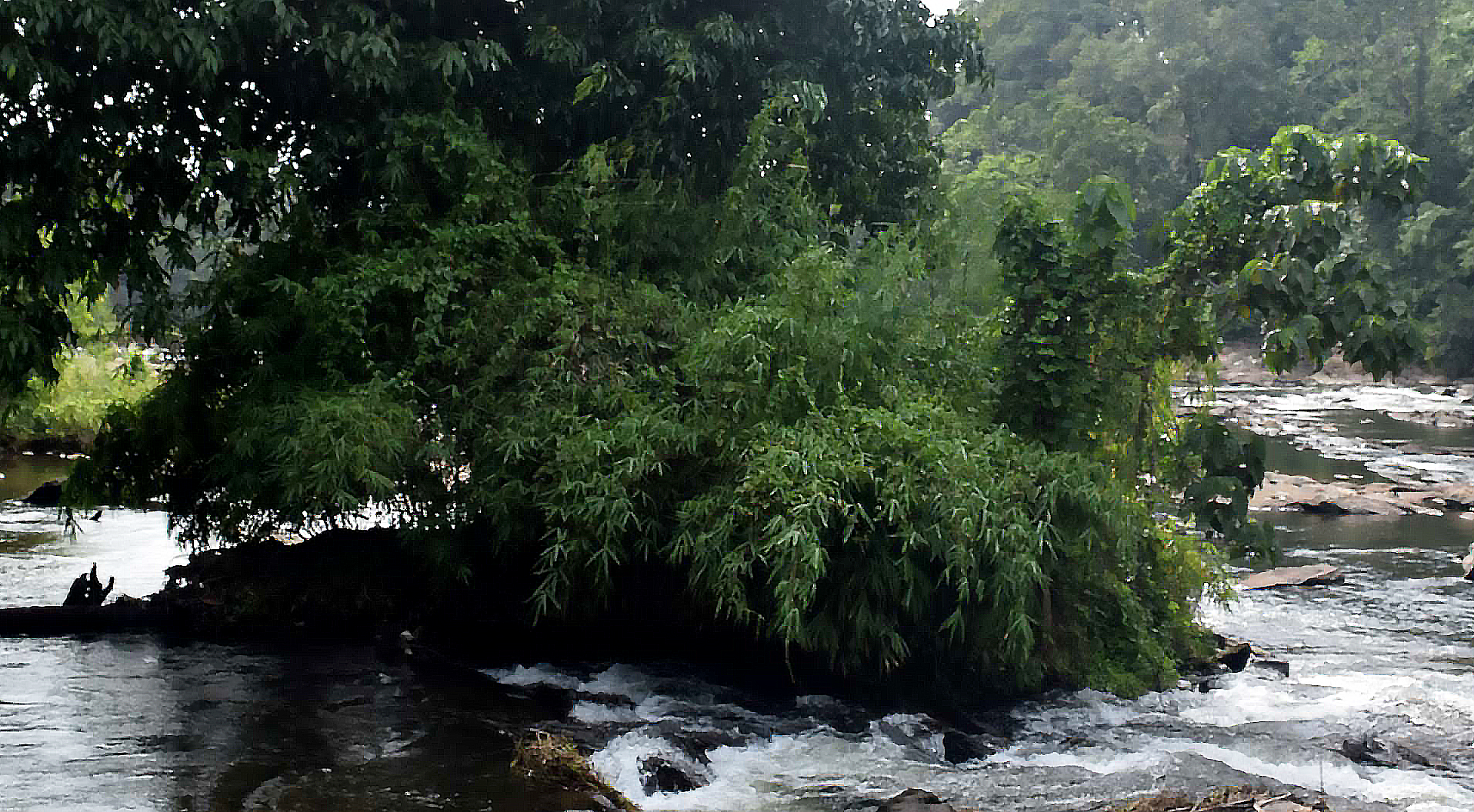
The Kadar houses are located quite close to the Vazhachal waterfall, which is a popular tourist location. The river is the centre of their life.
“During my school vacation, when I would come here, it felt different from the school—the river had a natural beauty to it, the riverside full of reed bamboo. The children would pull down the bamboo and climb the stalks—that was our major source of entertainment. We would jump into the water from the top of the bamboo. If our parents were going somewhere, we’d call all the children and go to the river with our food. We would eat it, balancing on top of the bamboo.”
– Geetha, Vazhachal, 2023
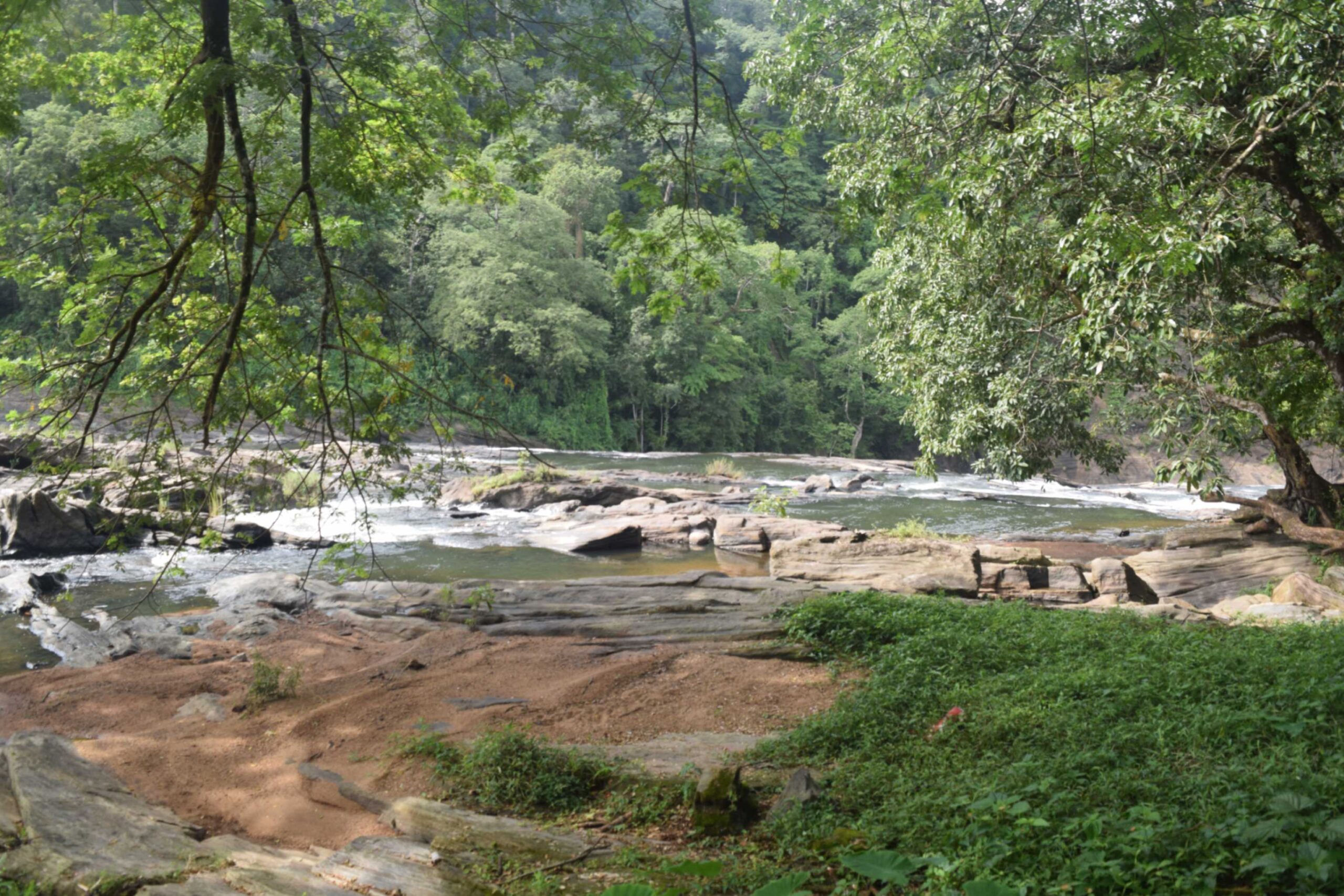
Living and Learning Among the Kadars
The main form of learning is going to the forest and learning to survive.
“Going to the forest, thangan povukka (going to stay), was a family activity. Parents and children go together during certain seasons, especially in March. There would be a bundle over their shoulders with food, vessels, and other necessary items. A suitable place is found, the area cleared, and a temporary shed made for stay. The shed would be made either with bamboo or tarpaulin sheets.”
-Bibitha, Vazhachal, 2023
Memories of Childhood
“They collect products like arrowroot, thelli (possibly, white dammer), honey, and so on. A mundu tied to the back of a person (called marappu) form a sling in which the youngest children could be carried. The child could sleep or play safely; only the hands and feet seen outside. The provisions are tied to the back along with the child. The kids would play from morning in blissful oblivion. The adults would fish and do the other jobs. At night, a fire is lit to keep away elephants and other wild animals. If there is no shed, everyone would lie down on a patch of ground.
Fishing is done by day and by night. If there is no net, an aluminium plate is used. A cloth is tied over, covering it, and a tiny hole is left on top. Rice flakes are dropped inside, and it is left in the water. Small fish get inside the cloth and after some time when the contraption is lifted, it would be full of paralmeen (Hiffin carp/long finned barb). These fish are cleaned, roasted over a fire, and eaten. We would eat the fish, the wild fruits—mangoes, jack fruits—it used to be tremendous fun,”
Bibitha, from her childhood memories, 2023
Geetha’s memories of the area are from a couple of decades before that of Bibitha’s. She narrated,
“Sometimes when my parents were not around, I would go to the river with my sisters. We would go to one of the various islets, catch fish, make fish curry, and eat it with tapioca made by my sisters. We would return only in the evening. Long skirts are worn when going to the river. The skirt would be shaped to look like a boat, and we would sit on top of that. We learnt swimming on these trips.”
The originally forest-dwelling community in Vazhachal does not stay in the deep forest for long periods at present; a few people go for 1–2 days to collect produce after obtaining a list of requirements from the others. The younger generation does fishing and minor foraging but does not spend days/weeks in the forest learning the ropes like the earlier generations.
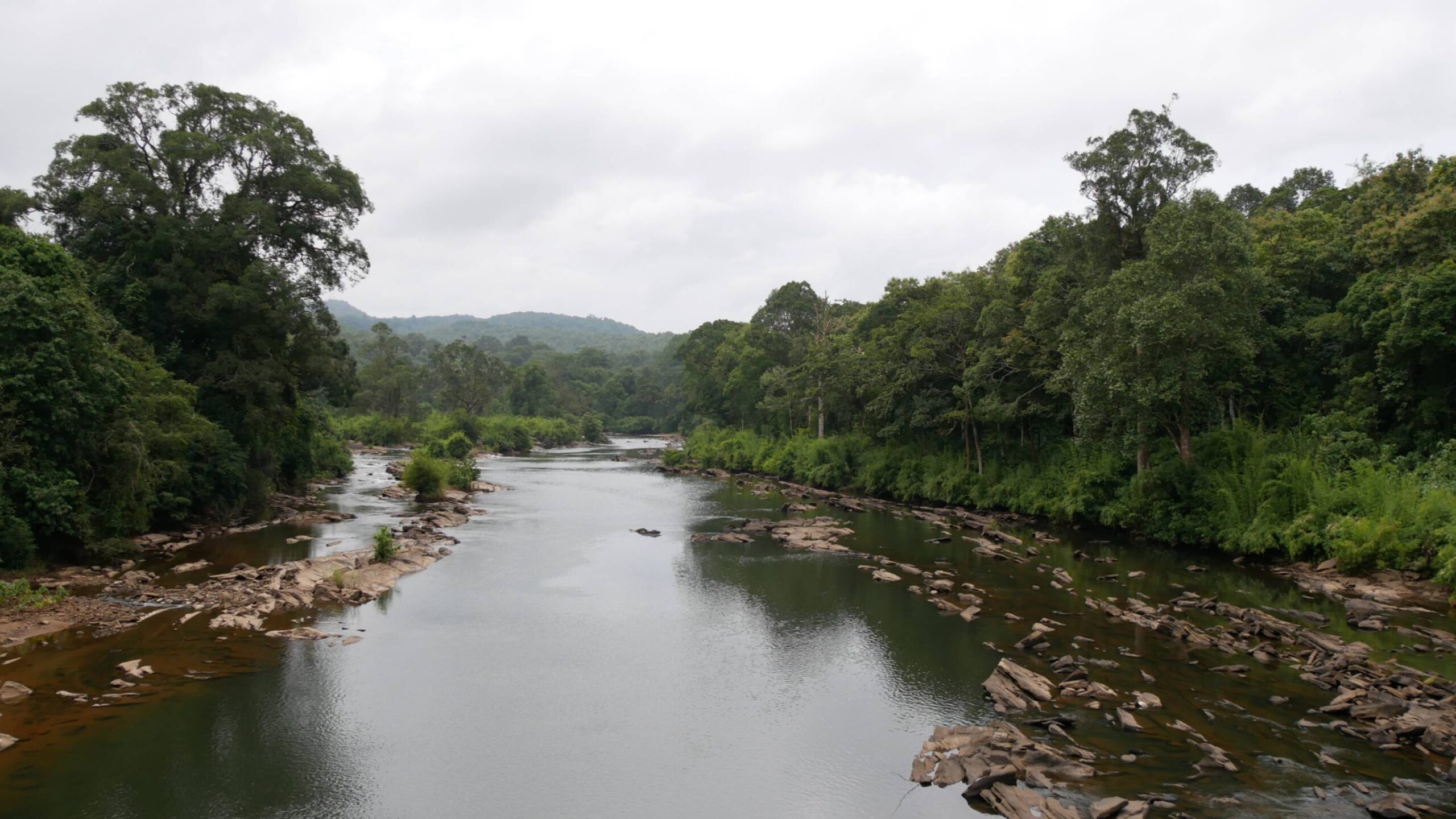
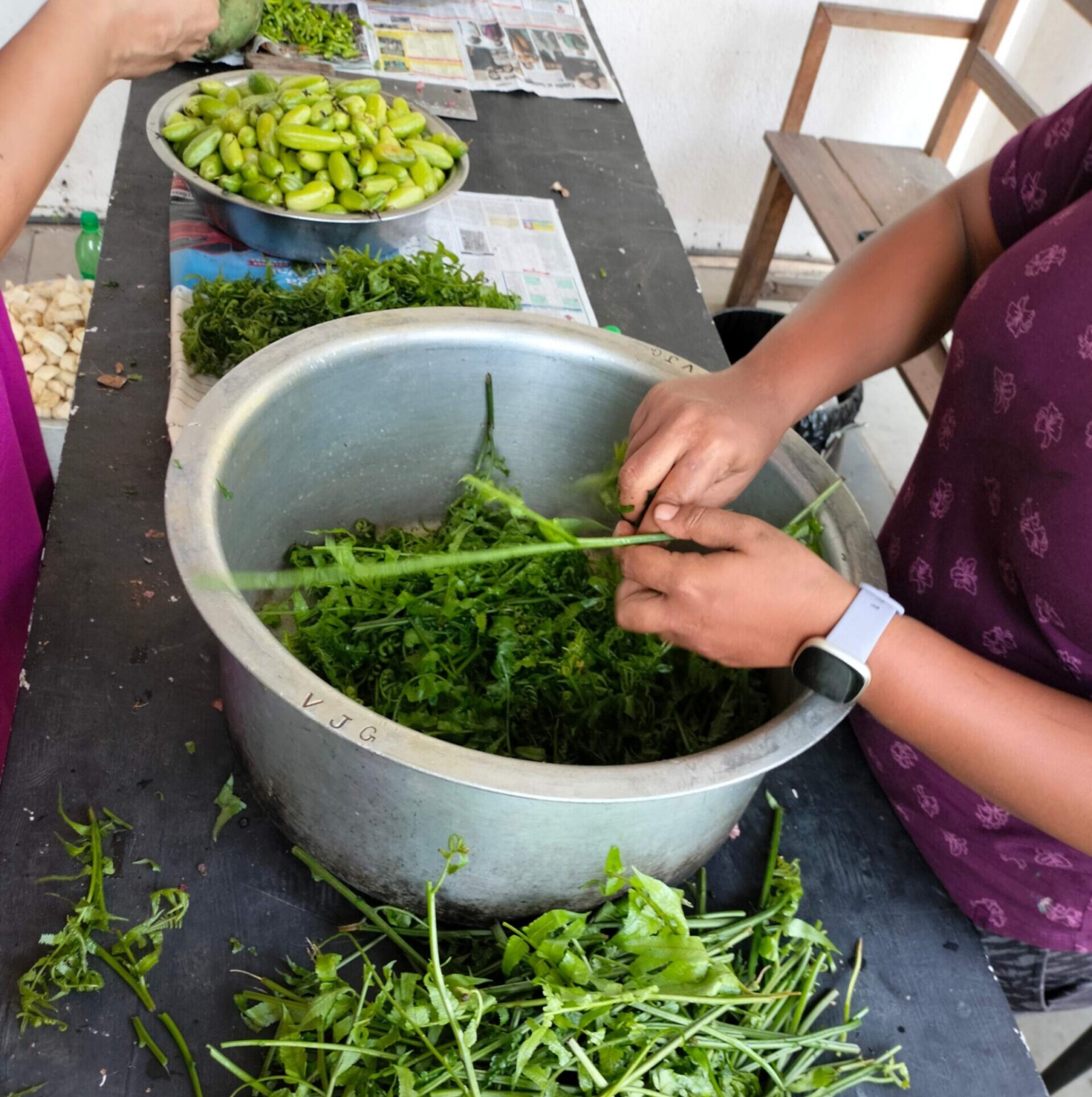
Formal Education within the Kadar ooru
Within the Kadar ooru in Vazhachal, there is an anganwadi run by a single teacher. Right now, the teacher is the ooru moopan, Geetha. She is in charge of cooking and caring for the toddlers.
“I try to include our traditional leafy greens when preparing their food.”
– Geetha, Vazhachal, 2023
She believes that their traditional diet is superior compared to the mainstream diet. Geetha mentioned barely getting time to teach the kids after the other chores. She tries her best to teach them the Malayalam alphabet since they would be joining the regular school. There is a primary school within the village that is government-run, the G.W.L.P. School. This school caters to students from within the ooru and children from nearby oorus belonging to other tribes.
The children at Vazhachal are all sent to schools, and for higher education outside the village if they are interested. The previous generation also had access to educational institutions in a limited manner. There are three types of schools to which students are sent: government schools, aided schools, and Model Residential Schools (MRS).
Adivasi Education in the State Apparatus
There are 36 major Adivasi groups in Kerala.
Often, people connect the socio-economic backwardness of Adivasis to their lack of education or formal education. The Census 2011 found that the literacy rate of tribals in Kerala was only 74.44%, much lower than the state average of 93.91%. Of the total tribal students, 70.64% were in primary classes, 14.91% in the secondary stream, 7.49% in the higher secondary stream, 3.81% pursuing graduation and post-graduation, and 0.35% in professional courses.
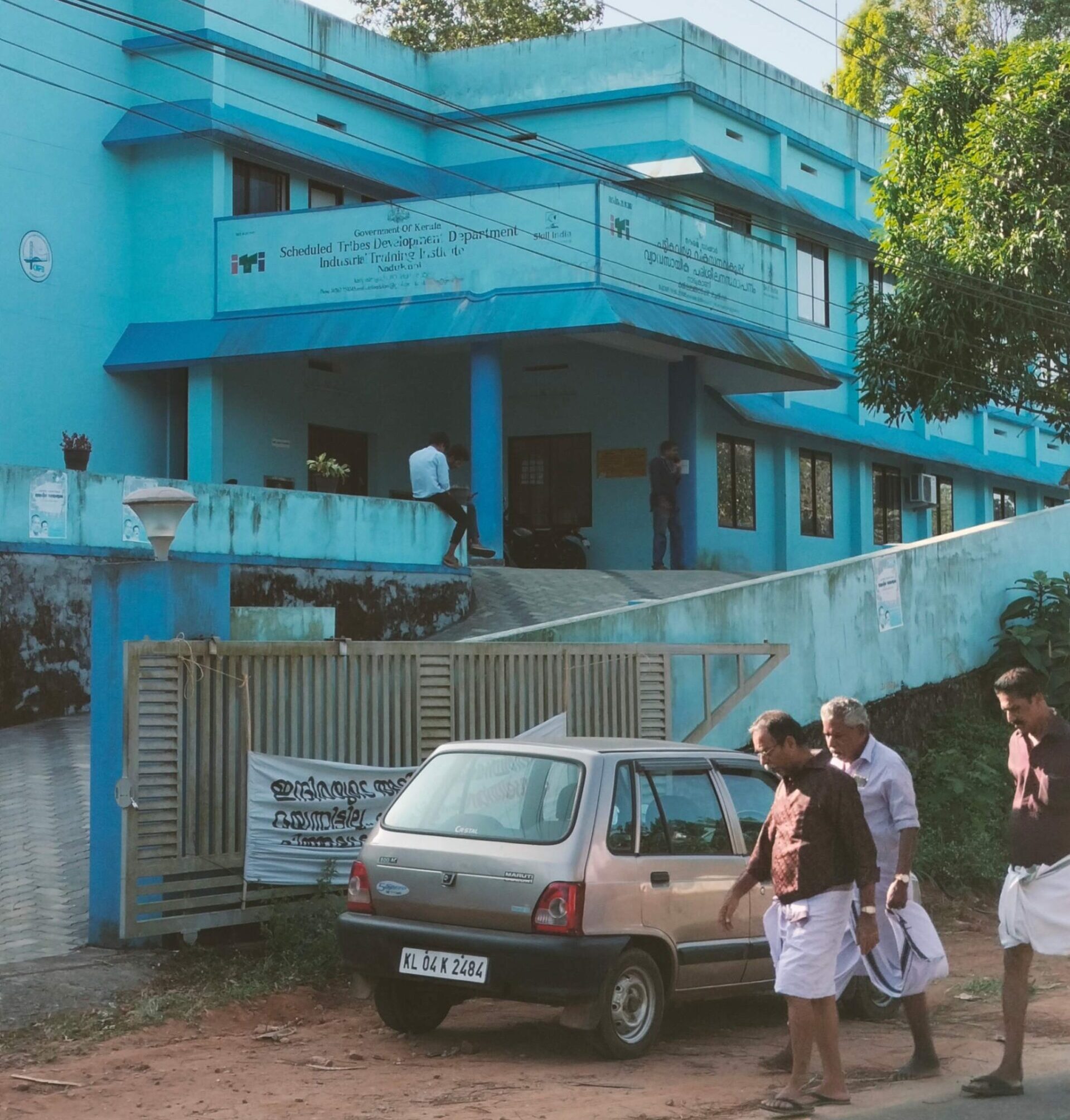
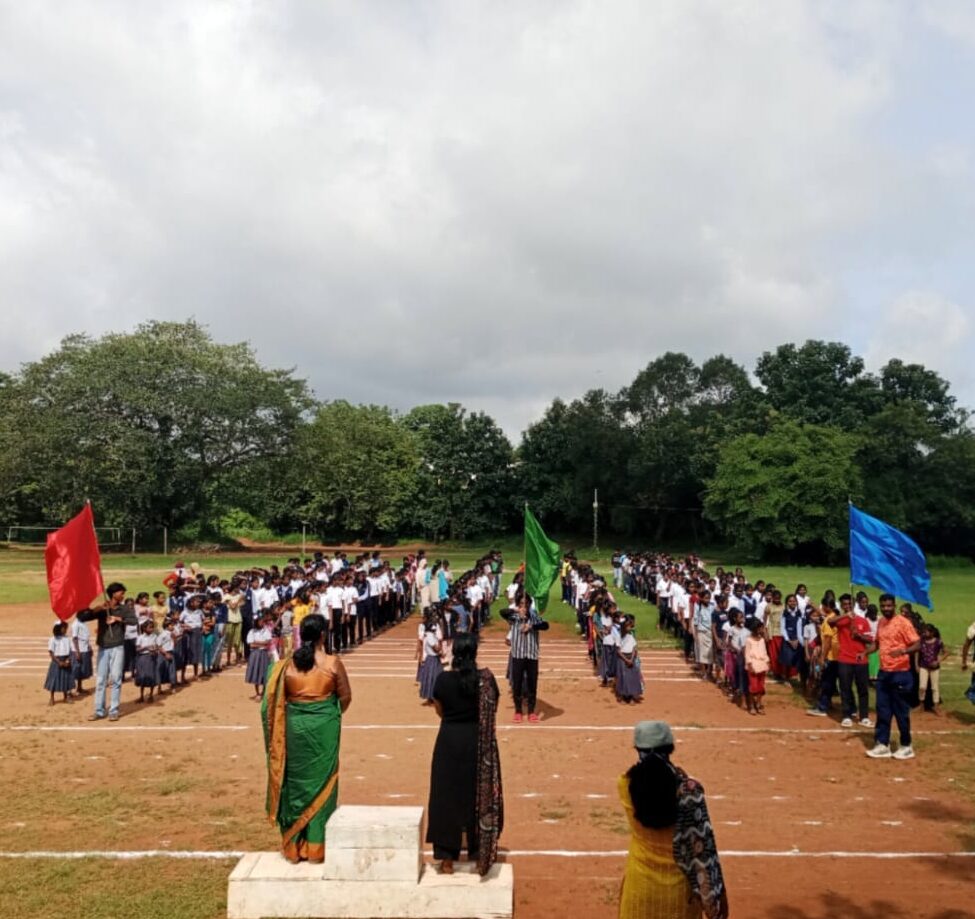
State Initiatives to Promote Education
Here are a few of the schemes that have been implemented by the Kerala government for the development of education among the scheduled tribes in the state.
- Balavadis run by the Social Welfare Department to develop an aptitude for learning among young children.
- Single-teacher schools, usually nursery schools, where the children are given free midday meals, school clothing, and a lump sum grant.
- A full fee concession, a lump sum grant, and a special stipend to study in government and government-aided schools and colleges. Parents who send their children to schools regularly are given a nominal grant.
- Educational recreation centres equipped with recreational aids, books, and so on in tribal villages.
- A 20-day all-India field trip for students who secure the highest marks.
- Model Residential Schools (MRS) which are boarding schools where the students are provided with free education, food, dress, and the opportunity to participate in extracurricular activities.
- Employment Training and Production Training Centres that give training in a job skill with a stipend.
- Gothrabandhu Teachers belonging to Adivasi communities are posted in schools to help the children transition to the mainstream curriculum.
Issues that affect Adivasi Education
Anganwadi, or pre-primary education, prepares children for primary education.
To begin with, many Adivasi settlements do not have these Anganwadi centres at all or if they do, they are situated in inconvenient locations. Some lack adequate infrastructure, and some settlements also need high school facilities.
The school attrition rate is high among the Adivasis (36.73%), and this increases at secondary school and post-graduate levels.
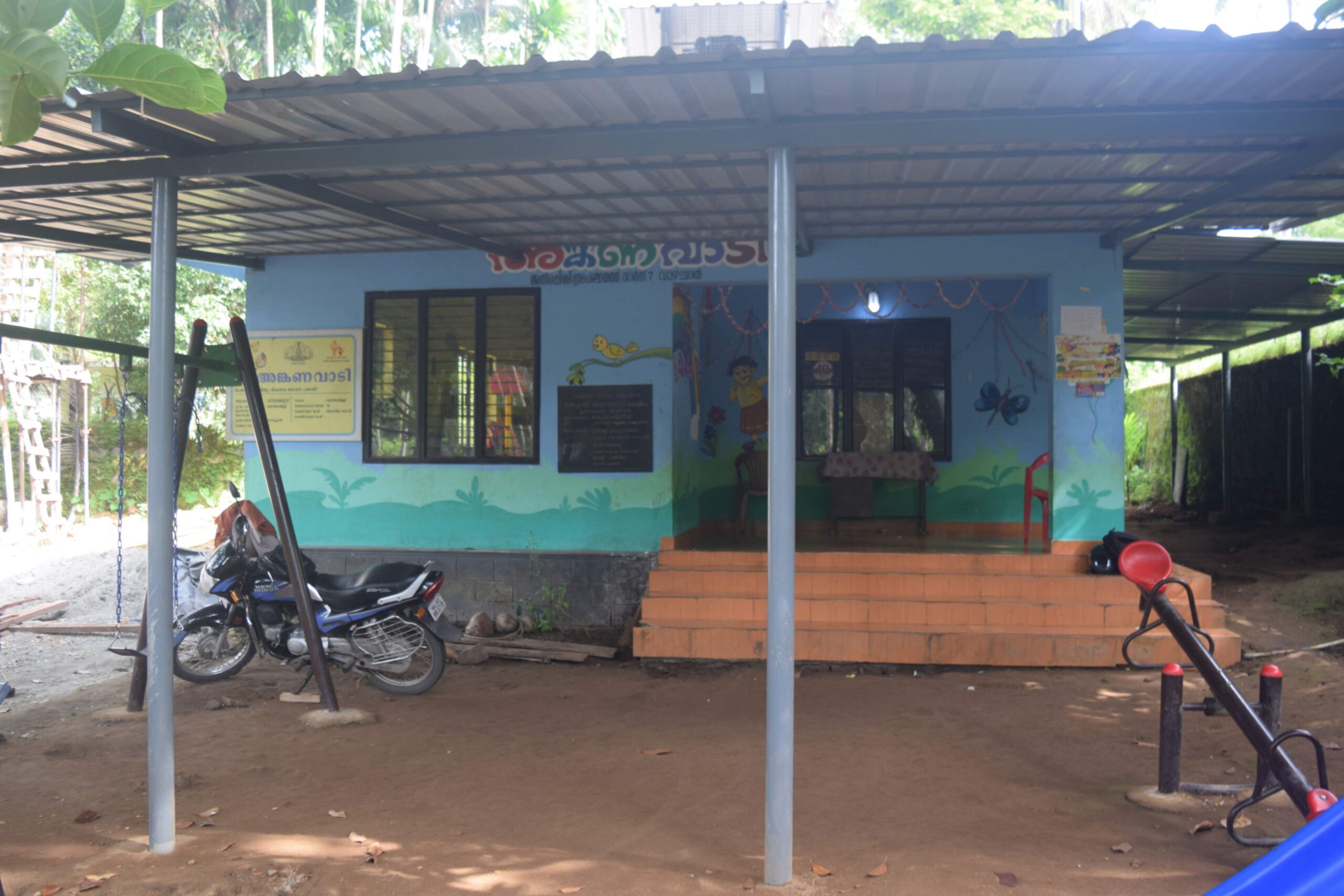
Many internal and external factors compound the socio-economic and psychological factors that lie behind the poor facilities and attendance at schools:
- Internally there are gaps in content, relatability of the curriculum, language of instruction, and outdated teaching methods.
- Administrative challenges such as the planning and implementation of policy are some of the external pressures and in the absence of a comprehensive plan, no monitoring takes place.
- At the core of the problem lies the difference in the social, economic, and cultural contexts of tribal communities and the psychological challenges learners face in environments alien to their own.
“A significant issue in planning educational programmes for tribal communities is that three different government departments—one for tribal welfare, another for education, and the local self-governing body are in charge. There is a lack of coordination and the departments do not share their knowledge and experiences adequately. This has held back the educational progress of tribal communities.”
– Athul Sarala Nanu, researcher and documentary filmmaker, 2023
The tribal children, especially from forest areas, are used to a relaxed lifestyle with a large amount of time spent in play and livelihood activities. The rigid structures of formal education, which emphasise discipline, routine, and teacher-centred instruction, have generated reluctance among them to engage with the educational system. There is also difficulty in establishing effective communication with teachers because of the difference in language and cultural disconnect.
The Vana Samrakshana Samiti
All the members of the community are part of the Vana Samrakshana Samiti (VSS).
“On a positive note, the members of the community have jobs in the VSS because of tourism. The bad aspect is the sound pollution brought about by the tourists, and the lack of privacy. We are not able to go out. They use our toilets. They walk through our land. All of these are difficult for us.”
-Geetha, Vazhachal, 2023
The members of the VSS work as staff in the area around the waterfall, manning the eateries and as guards. They also do jobs like cleaning the area, going to the forest as watchers and so on. Around 24 community members have a job with the VSS on a daily wage basis. The State Forest Department oversees its activities and funds.
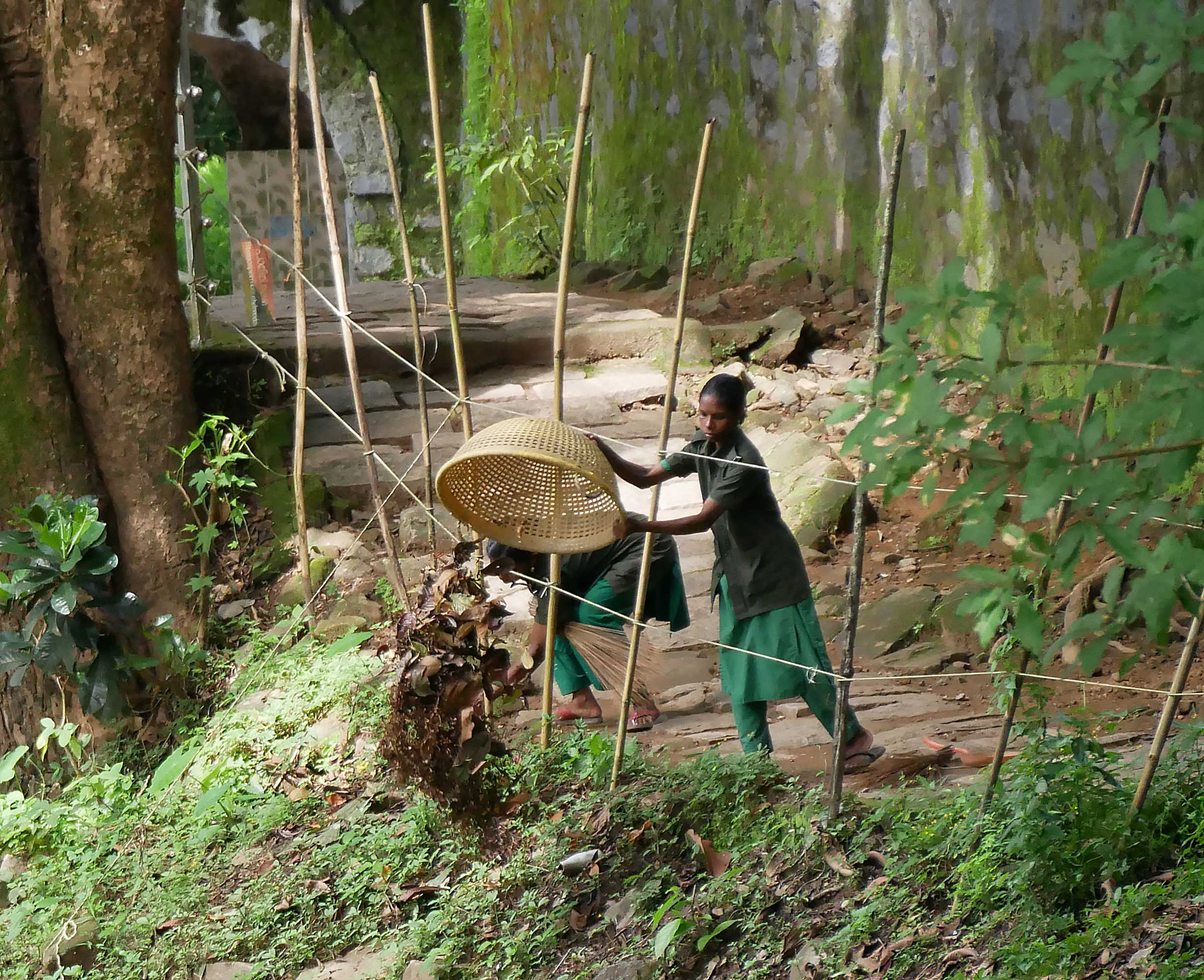
Geetha's Narrative
Geetha is well-known for her activism and advocacy of Adivasi rights. She led a successful movement against the building of a dam in Athirapally that would have inundated her ooru and ecologically sensitive areas in the region. Now in her early 40s, she narrated, “I stopped my studies after Standard 10. My father wished to educate us. But there was no transportation or educational institutions in our place then. My older sister did not go to school. The second sister studied till Standard 4. She handles Malayalam very well. My older brother also studied till Standard 4. In this settlement, I was the first one to study till 10th.” Geetha studied in several schools because of the lack of proximity to educational institutions.
Her father was a cook in a tribal school and her mother was an ayah (caregiver) in the balavadi (which later became the anganwadi) in the Kadar ooru. “I did not have an issue with language because my parents worked in a balavadi and school. We interacted with people from other communities. But it was an issue for children from other locations.”
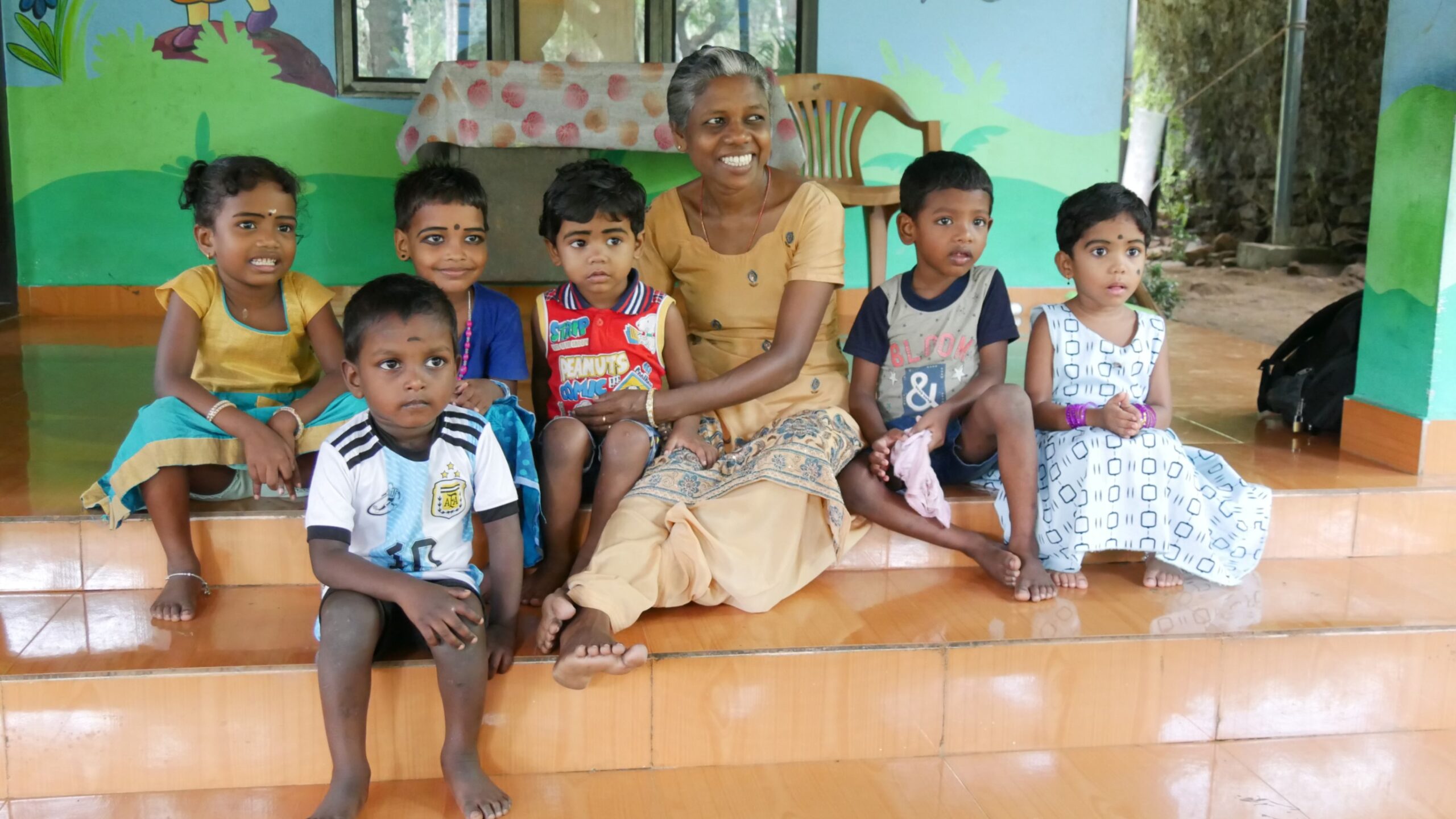
Social activism has a different meaning among the Kadars, Geetha explained, “In those days, after you finish your schooling, social activism was a small job available with the Tribal Department. It was a minimum-wage job. We had to do whatever they asked us to do. We had to go to the office only on Mondays, Wednesdays, and Fridays. Much of the work was in our oorus. If we asked for help, someone would be sent with us. It could be forest-related or something else.”
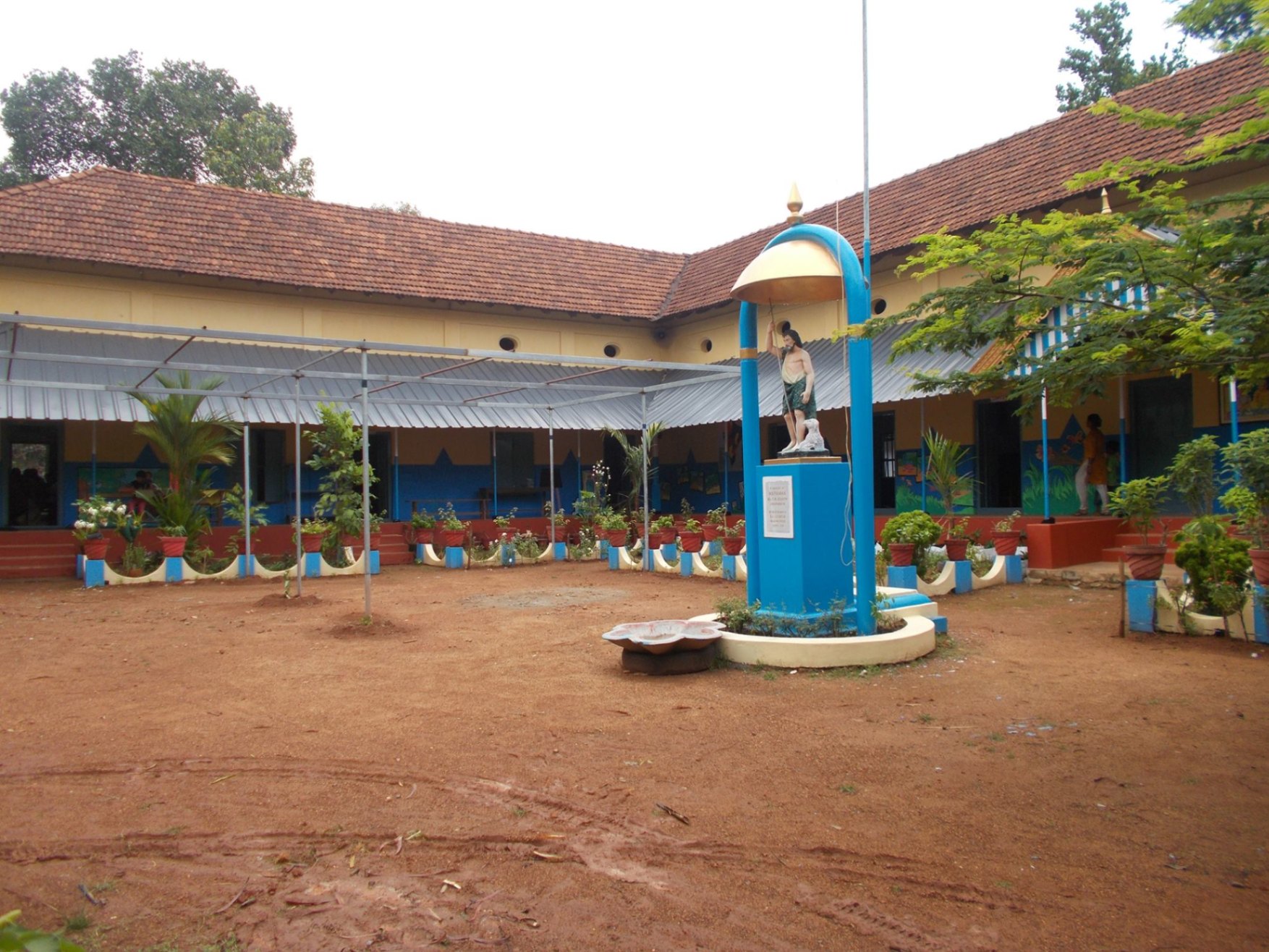
Schooling and education were not perceived as a need in the Kadar community until recently. Activists, like her, working for the Adivasi rights, had to identify children of school-going age, and convince the parents to send them to school. Often, they did not have enough information about schools near them and how to get to them, “We would board the bus and ask the conductor to let us know where to get down. When they realised that we were coming from far, they would help us. This kind of work that we did, created awareness and we learnt from each experience.”
“Later, parents wanted to know about their children’s progress at school. Much later, the question was what to do after Standard 10. We depended upon the Tribal Department to guide us and direct the children to appropriate streams. We tried to apply for student grants through the Kerala government’s Akshaya web portal. That is how we got the students educated in large numbers.”
Has schooling helped her?
“There are upsides to school education. We can read and write, read a board when we travel. I think we gain the maturity to speak to someone about an issue through education. It was due to my education that I gained the capability to speak about issues.” – Geetha, Vazhachal, 2023
Bibitha's Narrative
Bibitha is pursuing a B.Ed. at Kodungallur after having completed her MA in Political Science from M.G. University.
“The Vazhachal school was a boys’ school, and I was the sole female student when I joined. My parents would check on me occasionally because it was nearby.”
Afterwards, she continued her education at a school in Vynthala, Thrissur.
“My father did not want me to join an MRS. He felt that in the company of tribes-folk studying may not happen properly. Education was very important in my family, but there was no push to go further as getting a job and financial safety was more important than further education. I had to push myself to get where I am now.”
– Bibitha, Vazhachal, 2023
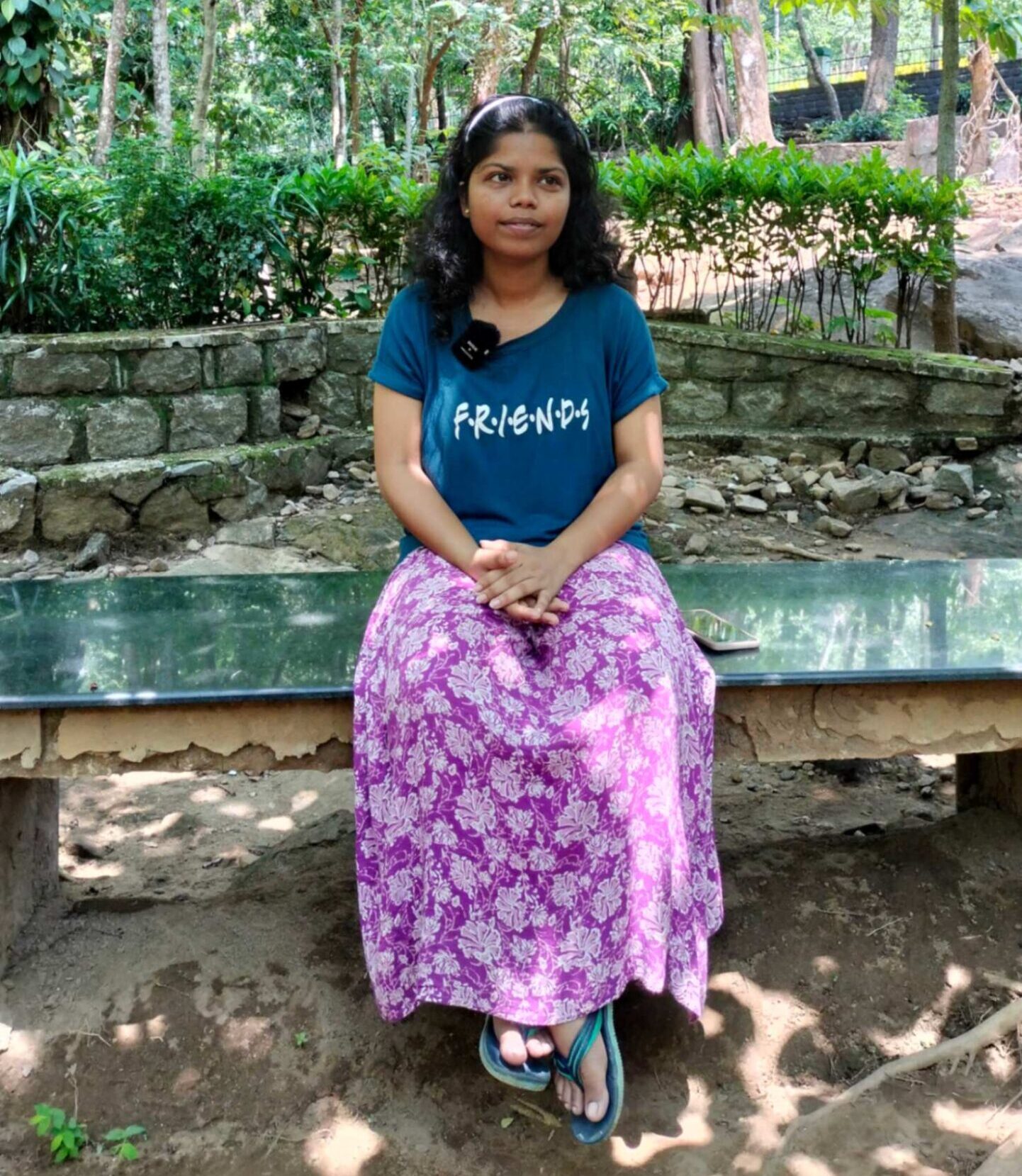
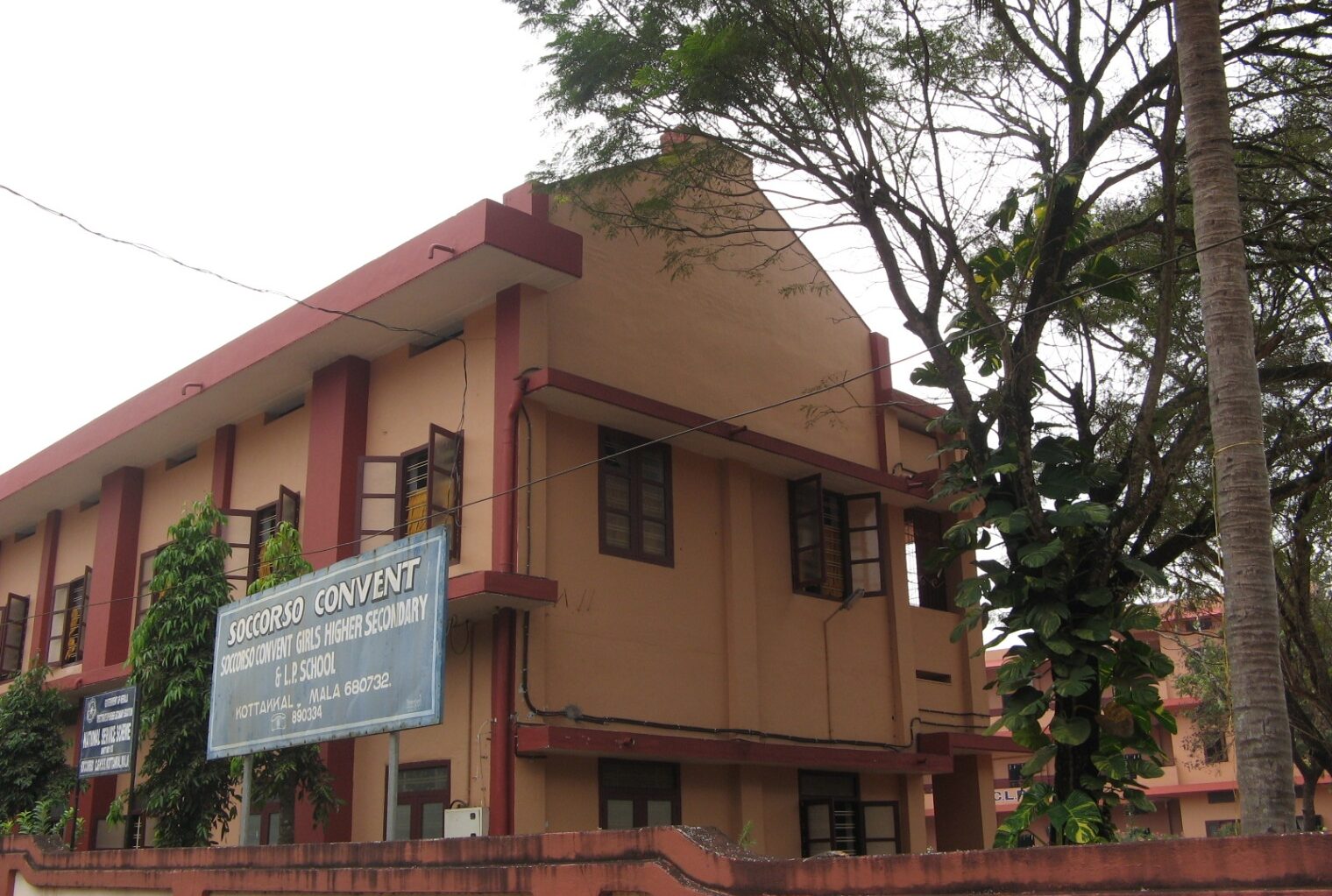
What challenges did schooling pose for her?
“I struggled to comprehend what I was learning. The language of instruction, Malayalam, was unfamiliar so it took me time to adapt. Being an average student, I faced additional difficulties. When I joined the convent hostel in Standard 5, I lacked basic skills like being able to plait my hair or wash my clothes. Having someone to guide me would have helped me adjust. My parents would visit every two weeks, but I could only go home during vacations or emergencies.”
“I had friends from my community during school years, but it was after school that I began to make friends from outside the tribe.”
– Bibitha, Vazhachal, 2023
Nivin Vinayan's Narrative
Nivin, a student in the 7th Standard of Model Residential School in Wadakkanchery says, “I enjoy school. I have many friends, and I am busy with various activities. My close friends belong to other tribes—most come from Attapaddy and Malakappara. There are no children from my ooru in this school.”
“We wash our own clothes. The uniforms and toiletries, like bathing oil and soap, are provided from school. Stationery items are also provided by the school. We are not allowed to take any food/snacks from home.”
Nivin was happy at the Vazhachal government school where he did his primary education, “Each class of 15 students had one teacher who taught all the subjects. The school day started at 8 a.m. and went on to the afternoon. Lunch was provided. In the afternoons, we would watch videos on a projector, often from KochuTV. We had one computer for IT sessions.” In comparison, the MRS School has more computers, “Two students share one computer. Projectors are used for teaching at the MRS, and most subject teachers use computers, except for Malayalam. They sometimes project the questions for the exams onto the screen too.”
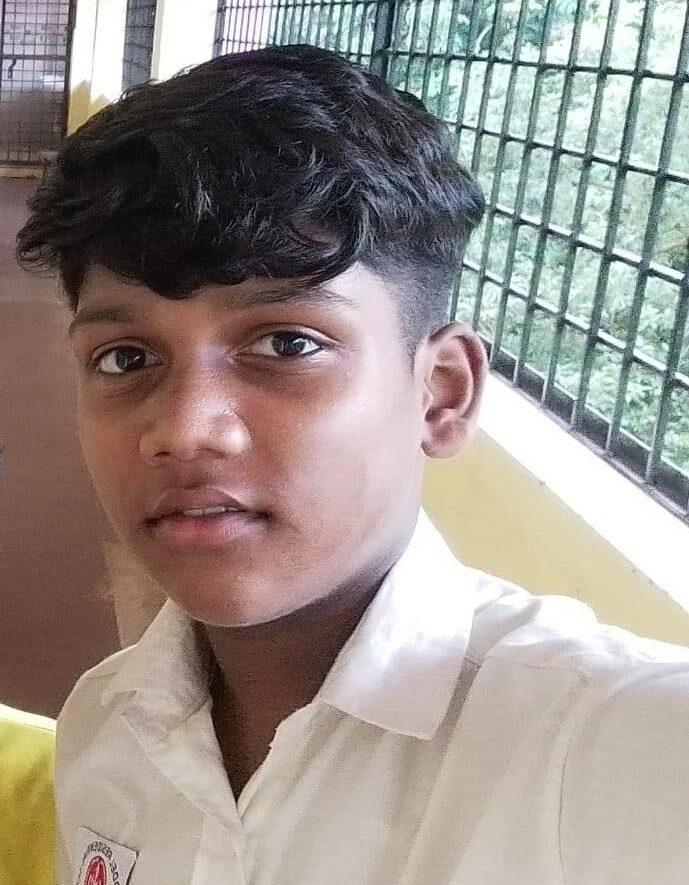
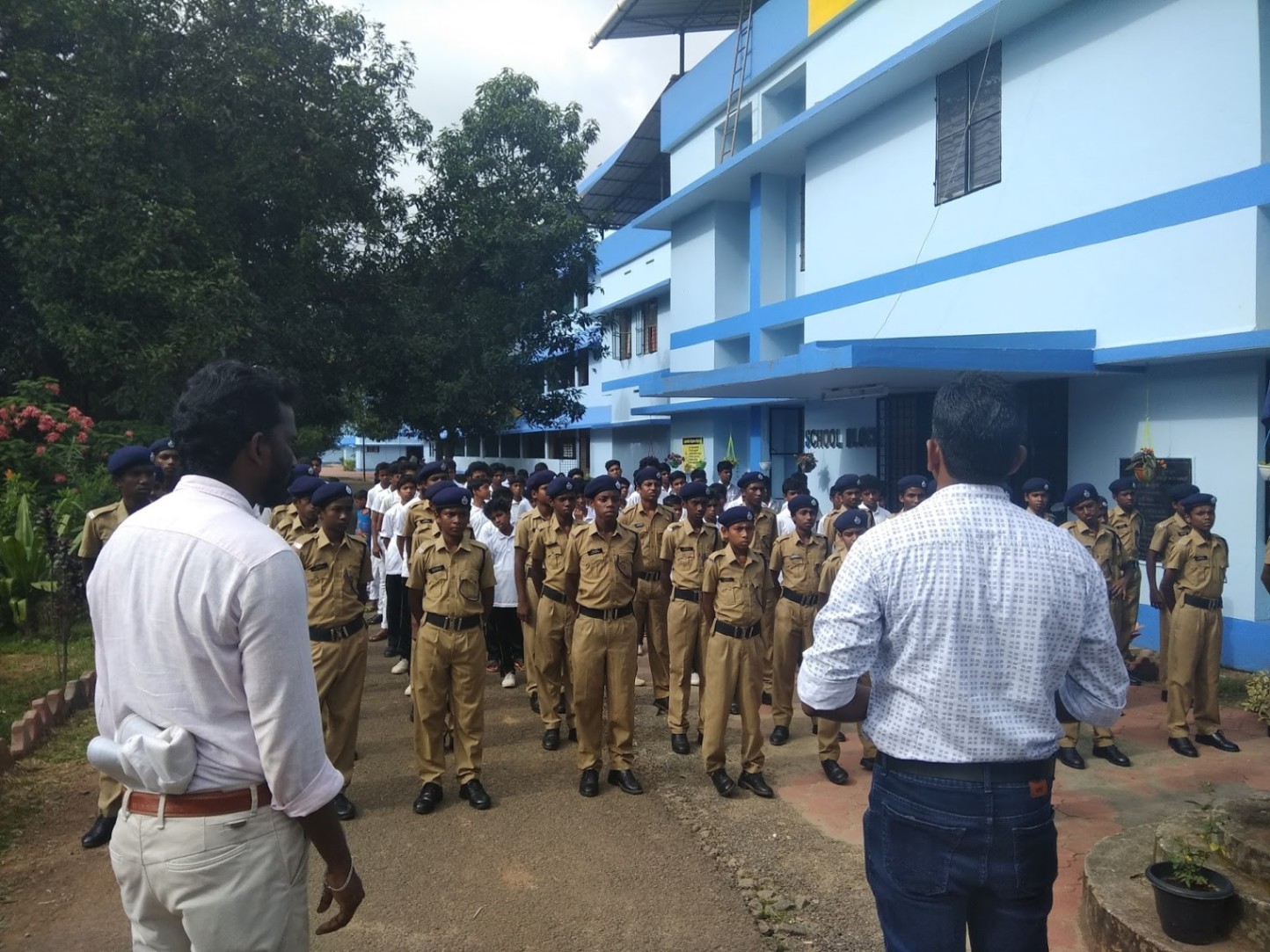
Nivin aspires to pursue Plus Two and a degree but was not well-informed about the options. His preferred subject is Social Studies, and he hopes to work at VSS.
“My family members work at the VSS, except for my father. He works at a canteen in Athirapally. I prefer to work with the VSS.” – Nivin, Vazhachal, 2023
Praseena Narayanan's Narrative
Praseena is working with the VSS at present. She started working after the flood of 2018. She hopes to pass the Public Service Commission and get a government job.
“I did Plus One and Two at the Chalakudy Boys’ School and my primary education at St. JBC L.P. School Pariyaram, Thrissur. From Standard 5, I studied in the MRS, Nayarangady. My family members chose the schools. They chose MRS because it was for tribal students and there would be students from other tribes. There was intense competition among the various tribal students, especially during examinations.”
“At Nayarangadi, we had gardening and agriculture. There were cycling and motivational classes till 5 p.m. There were also yoga, volleyball, and other games supervised by non-tribal teachers. There were no gothrabandhu teachers at the MRS.”
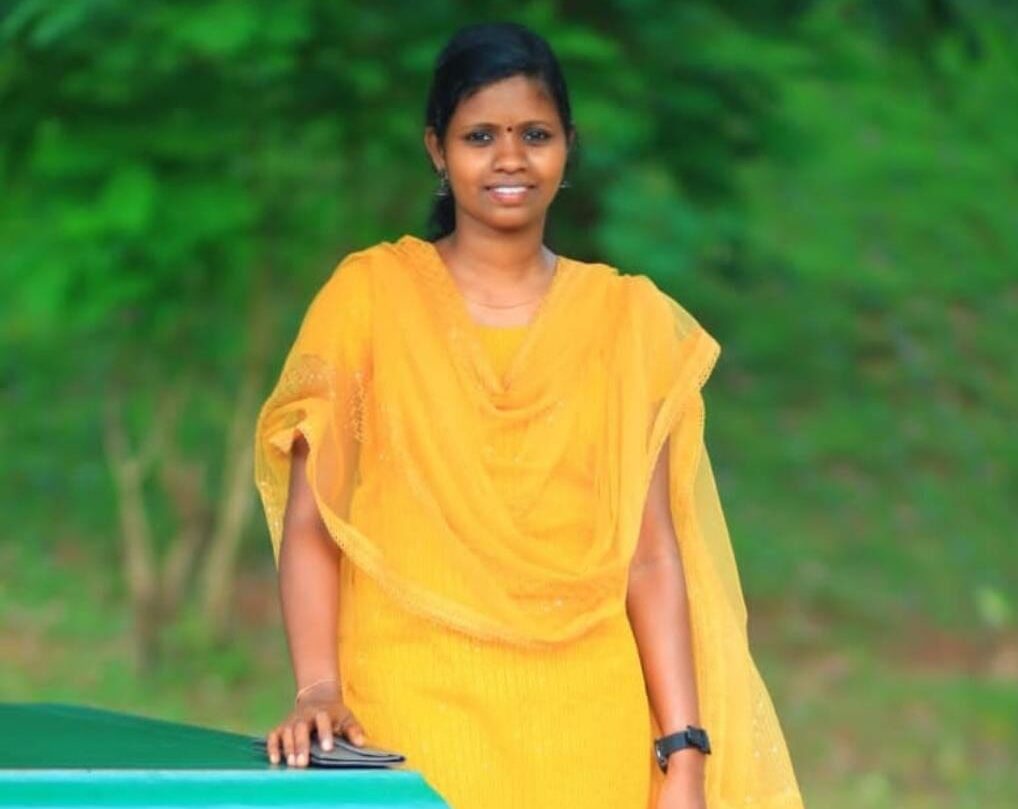
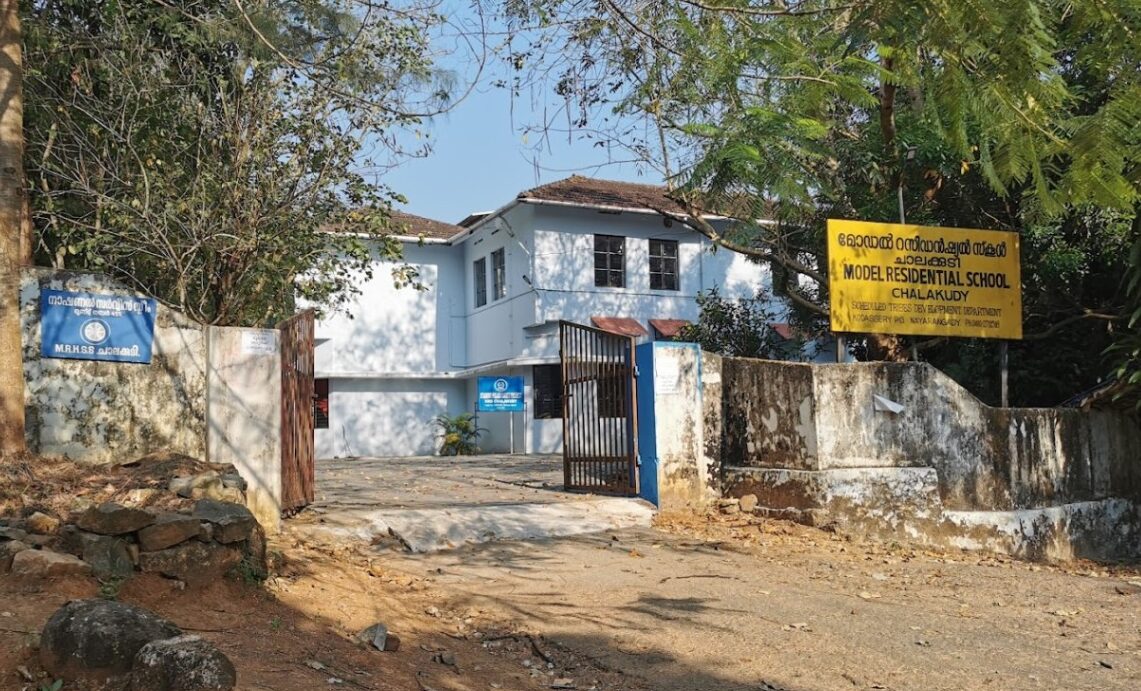
“There were four students per room. Each student had an individual study table but shared bunk beds. Each class normally had its own common areas and bathroom. The uniform was provided by the school. Two soaps and other toiletries were given to us every month. There was an ayah to wash the clothes of students in Standards 5 and 6. The school provided a pair of clothes for wearing at the boarding. and the uniform could be brought home every year.”
“There was a small evening prayer, naamamjapikkal. Though we do not have this kind of prayer at home, we did not find anything odd in the activity. We were taken on one-day trips and to the temple if we wanted. I went to Delhi, Agra, and Punjab with another student from Vazhachal on one such all-India trip arranged by the Tribal Department. We were 60-70 students in total with two students who passed out of standard 10 from different MRS’s.”
Reshma's Narrative
Reshma studied at Pariyaram till Standard 4. Then, she continued at the MRS.
“I didn’t have any language-related difficulties when I joined the school at Pariyaram because my father was a non-tribal from beyond Athirapally. We used to stay there when we were younger and spoke Malayalam at home.”
For Reshma, the school was fun due to the presence of friends.
“I did Plus One and Two at Vettilappara, Girls Higher Secondary School (GHSS). At home, going out was not allowed, I had to steal out without my mother noticing. I feel like I have more freedom now that I am working. I want to study further—get a degree in Mathematics and take up an accountancy-related job later.”
“I want to continue studying in the distance mode but I will have to bear the costs myself. The tribes do not get any monetary help from the department for distance-mode education. An official had taken the list of students interested in further education and I had given my name as a pre-runner to applying for a course. Nothing has been done about this so far.”
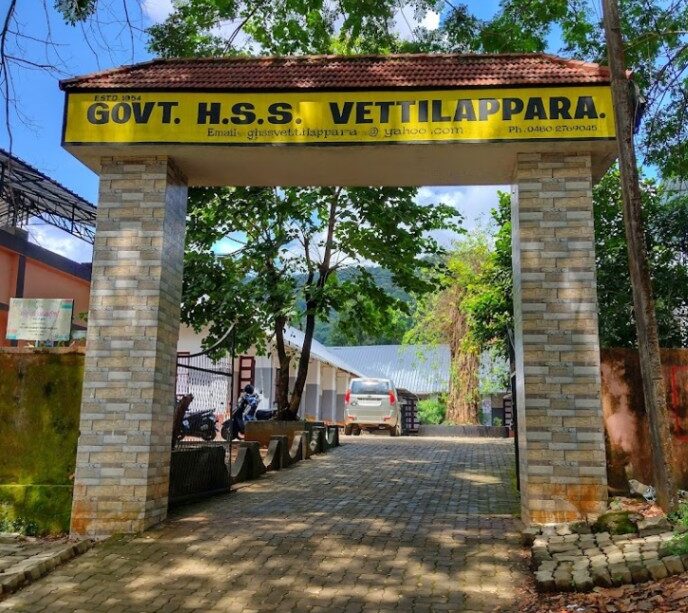
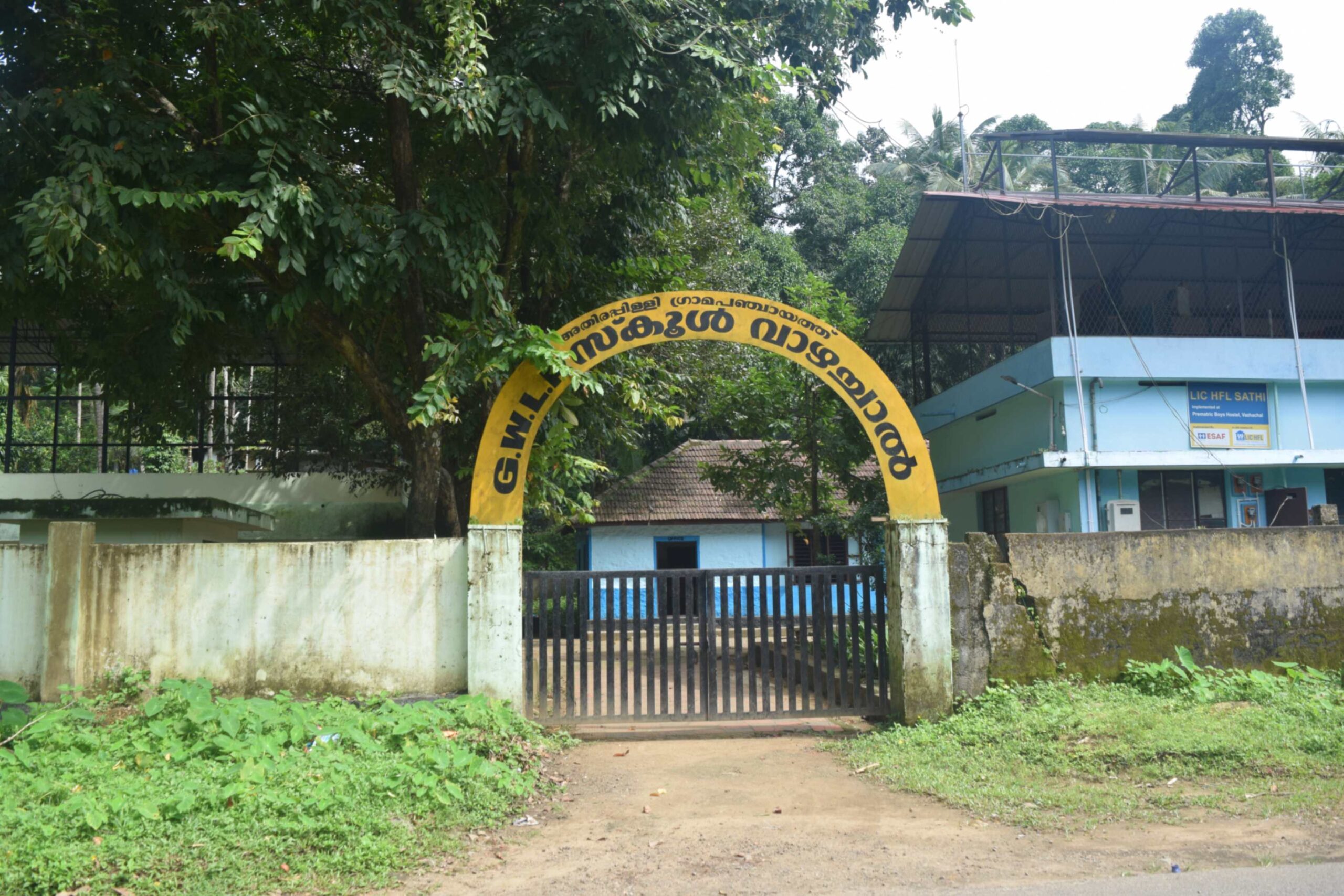
“The primary school in Vazhachal has around 50 students and 2–3 teachers. The fee is lower than in other schools but they do not teach well. The teachers play cartoons for the students on a laptop, and then retire to the staff room to play games on their mobile phones. We complained to the school and agitated about this. To show that something was being done, the teachers started writing comments in the students’ notebooks. The teachers are from outside; they do not care about student outcomes for tribal students. In contrast, the teachers don’t slack in the MRS.”
Reshma used to tutor the students during the pandemic. Describing the attitude of community members towards teachers from the ooru during COVID-19, Reshma said, “The parents of children from outside the ooru had no problem, but parents in the ooru used to reprimand their kids for studying with us. This is because we have a strong opinion on whatever happens in the ooru. The older generation are not happy with that.”
“We perceive a difference in the treatment of the younger generation who have had education within the ooru. People look down upon the educated women particularly. Moreover, whenever there is a general meeting, we ask uncomfortable questions. We are considered ‘rebels.’ The young men are not as active. They do not attend the general meetings. They are more involved in the forest-related activities of the VSS.” – Reshma, Vazhachal, 2023
The Kadar Disconnect: Issues Specific to the Community
In Vazhachal, several issues need to be addressed to develop education and the community.
To begin with, Adivasi students all felt disconnected from the educational materials because the curriculum and textbooks failed to adequately represent their life, culture, history, or knowledge, focusing primarily on the experiences of urban middle-class children.
In most cases, Kadar children are first-generation learners whose education is neither reinforced nor supported in their home environments. Moreover, the teachers do not have appropriate training to deal with their unique situation. The primary school within the ooru was not functioning well because the teachers were not motivated or accountable to anyone and/or because they were non-tribal teachers. Gothrabandhu teachers from within the community may be necessary for the school to function successfully.
“The students require a tutorial or reading room where they can revise what they have studied at school—it can provide additional support in subjects they find difficult during the vacations. Moreover, appointing teachers from within the community at the tutorial room would provide training and job opportunities for the educated youth among the Kadars.”
– Bibitha, Vazhachal, 2023
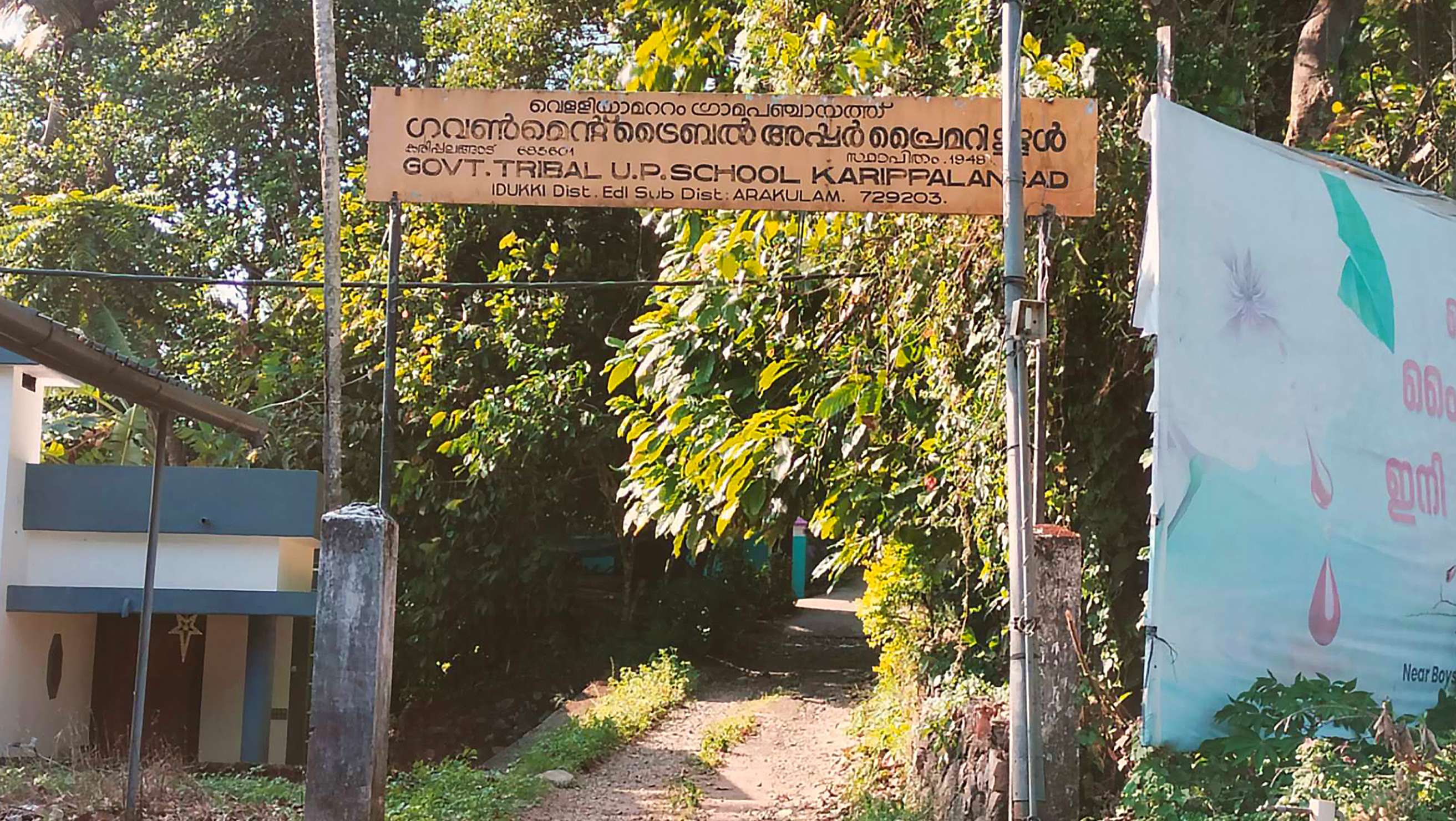
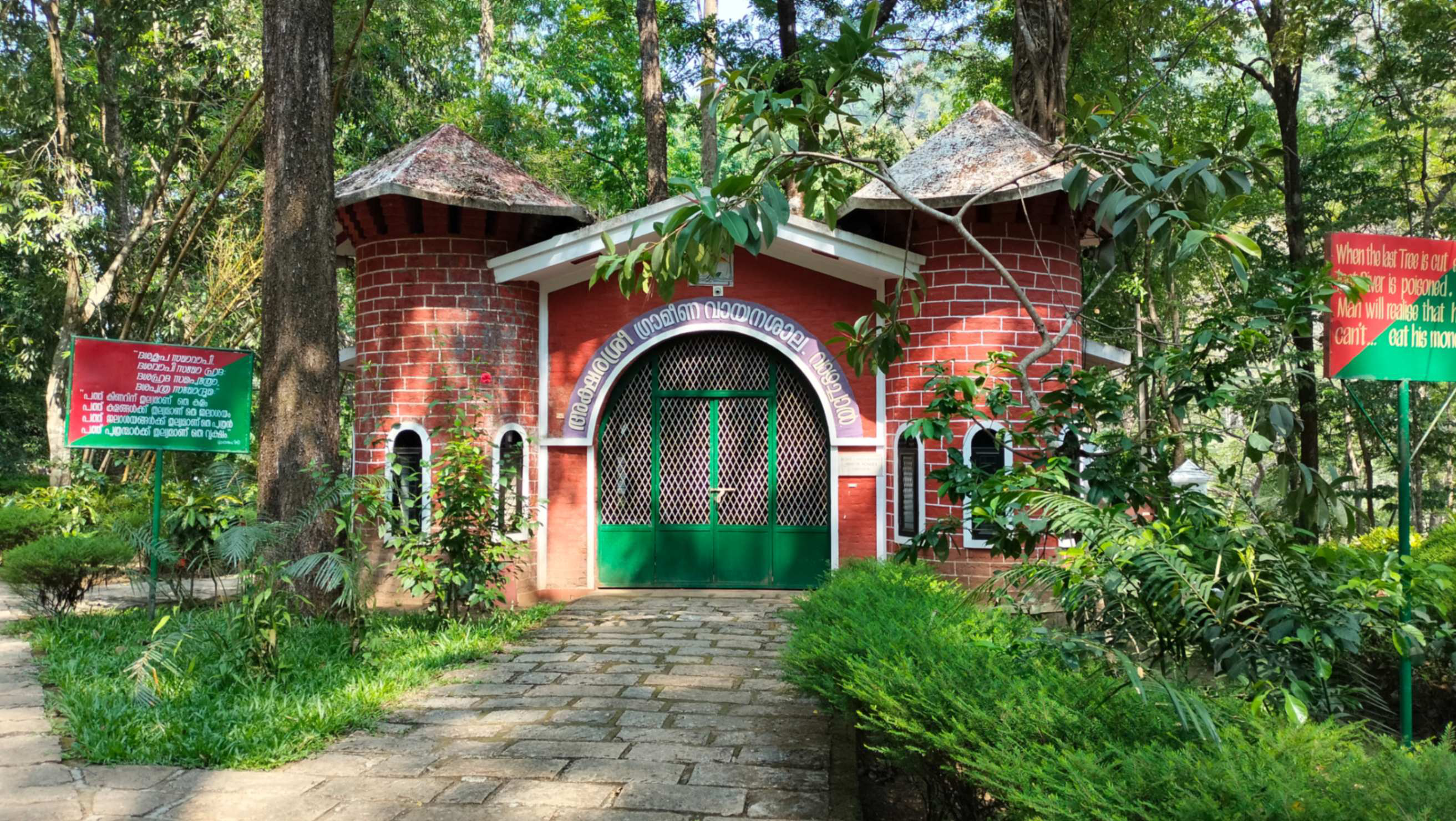
Though there is an oorukoottam (village assembly), from what the students and young adults said, it was clear that the decisions taken at the meetings did not specifically address education and schooling-related issues. The younger generation is interested in making changes within the ooru that reflect their direct experience but does not have a platform to voice their opinion.
“They may require language lessons before they go to schools outside the ooru to make the transition easy.”
– Reshma, Vazhachal, 2023
“There is no employment or production training centre close to the ooru that would provide alternative employment and training opportunities to the students. A guidance cell that can provide proper information to the students regarding scholarships is necessary.”
– Bibitha, Vazhachal, 2023
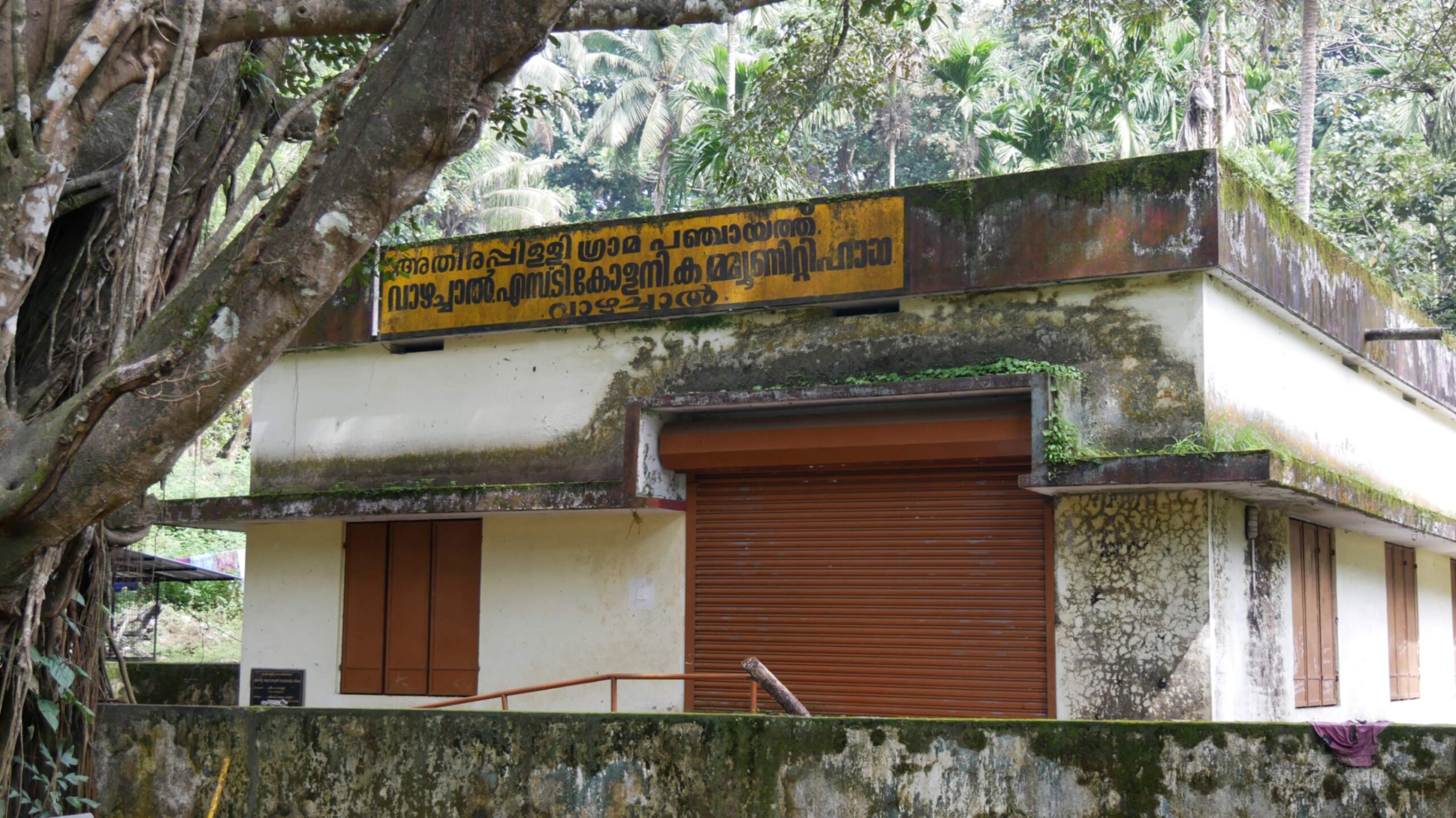
Future Directions
The future vision of the Kadar community is to integrate with mainstream Malayali society, gain jobs in the cities or towns, or get a job with the VSS while retaining some of their traditions. The fundamental challenge the Kadars face in the modern world is the dichotomy between learning new skills against the backdrop of losing everyday connection with the land. On the one hand, land is an integral part of their identity, culture and spirituality, and maintaining a close relationship with it is essential for their well-being and resilience. On the other hand, learning new skills such as technology, education, and entrepreneurship can help them adapt to the changing environment, access new opportunities, and participate in the global society. How can they balance these two aspects of their lives without compromising their values and traditions?
